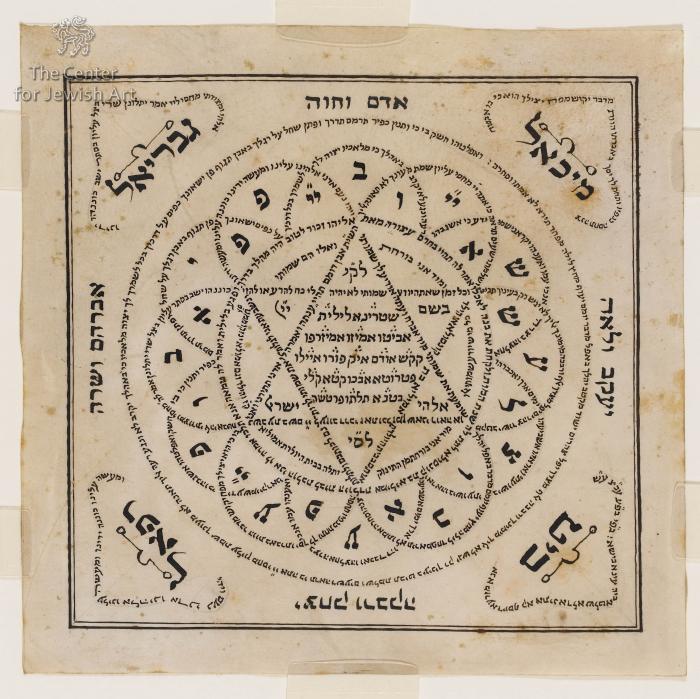Obj. ID: 51260 Amulet, Italy, circa 1850

sub-set tree:
The following description was prepared by William Gross:
From earliest times, man has tried to protect himself from misfortune by the use of objects which he considered holy or otherwise (e.g., magically) potent. Amulets and talismans are items generally worn around the neck or wrist, carried in a pocket or purse or hung on a wall. They are meant to protect or aid those who carried or wore them. The Hebrew word for amulet, kame‘a, has the root meaning "to bind". Jewish amulets are usually comprised of texts (either letters or graphic symbols) that are inscribed on some sort of material; some may also contain plant matter or precious stones. The texts of amulets usually include holy names that are believed to have the ability to affect reality, along with incantations summoning angels or other magical powers. For the most part, an amulet has a specific purpose: to ease childbirth, facilitate recovery from illness, improve one’s livelihood, and so on, but in the modern world many are also made for general protection.
Talismans come in many shapes and forms and for many different purposes. One of the most popular is the birth amulet. This piece is such an amulet, written in Italy for the woman Emilia bat Consola. The parchment is inscribed with the names of the angels whose protection is invoked. The sheet is filled with inscriptions in micrographic form in pleasing forms and arrangements, some of which are specific invocations against the evil powers of Lilith. The names of the Patriarchical couples are inscribed as well. Birth was a frightening and dangerous prospect in the 19th century and such amulets surely were comforting for the mother and family before the impending birth. This amulet is rendered in a particularly aesthetic design. It would seem that this amulet was designed to be hung in the room of mother and child and not folded and carried, as prescribed in the story of the conversation between Eliyahu and Lilith, written on this amulet. In the Gross Family Collection there is a second birth amulet by the same scribe, 027.012.042.
Made For: Emilia bat Consola


